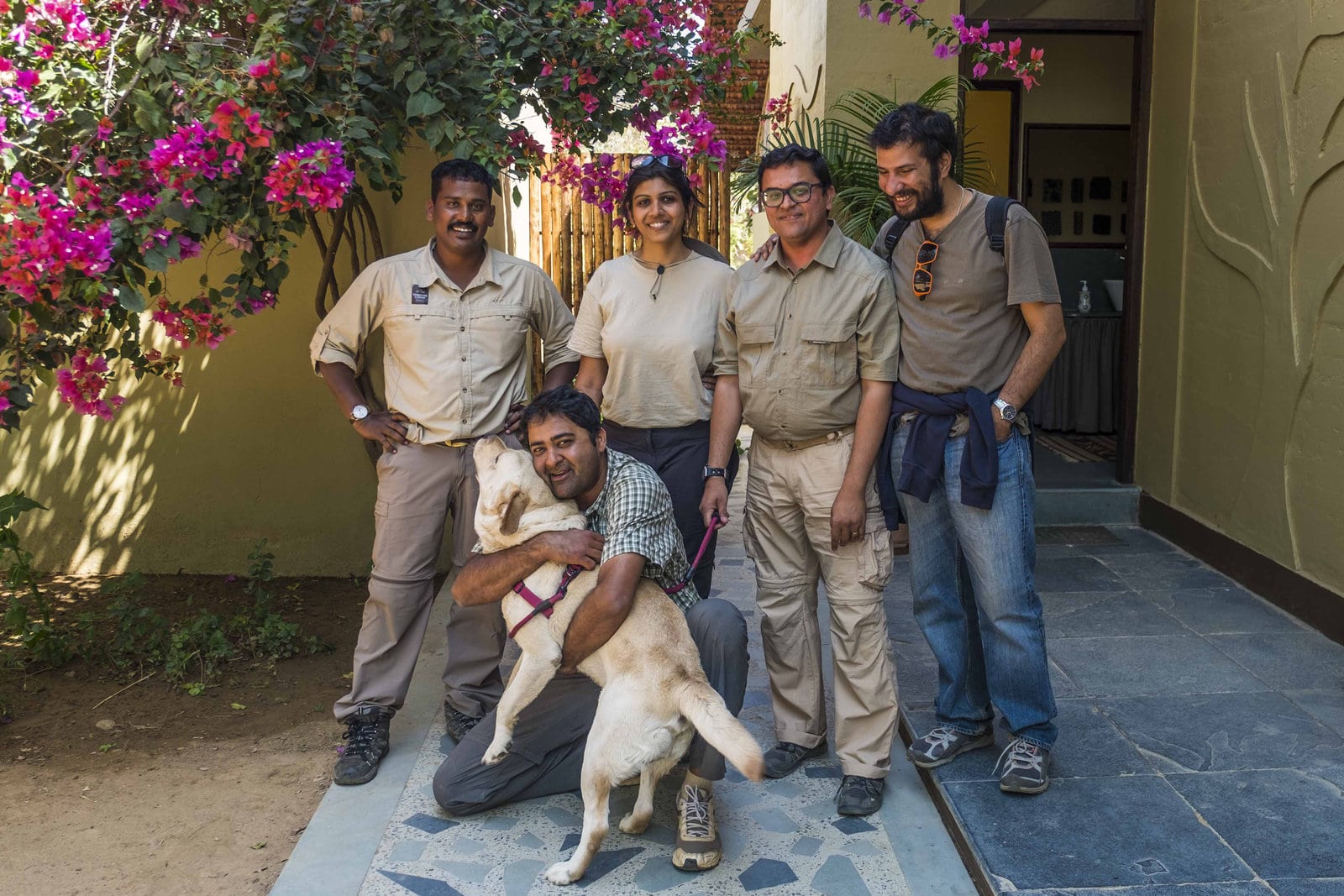“Thud…thud”.
We all looked at the large clear window to see what had caused the loud sound. ‘Birds’, said Beejoy, running outside with Hoshner close behind. I walked to the window and spotted the fallen birds, a pair of Orange Headed Thrush, who had flown straight into the clear window, stunned, but thankfully alive. Beejoy carefully picked up one of the birds and sat at a nearby pond, filled with lotus leaves, tending to its injured side. I walked past the breakfast table, filled with empty dishes after a hearty brunch of eggs, bacon, toast, appam and stew and countless other dishes, and out to join the others. Every meal at the lodge was a grand affair and we were spoilt for choice. The birds were in a bit of shock but fine, Beejoy’s nursing had helped and they hopped off to join their own. The area outside the main building was shaded and cool, and we sat beside the pond chatting about the tiny little creatures that make up a forest and the 3 days I’d spent there. It’s one of the things Satpura prides itself on, the joy of exploring a jungle that opens up to the viewer if we only look beyond the Tiger.
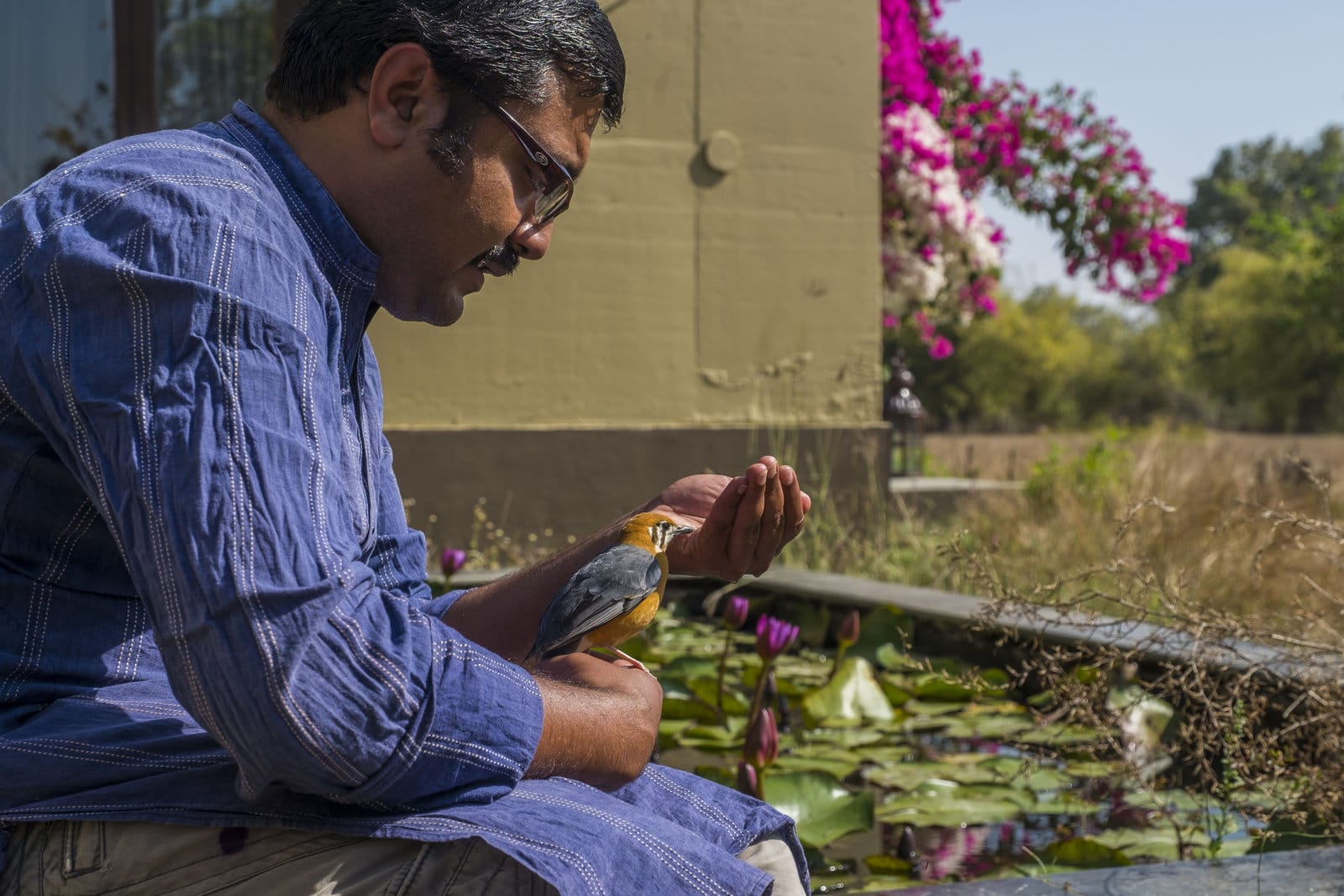
We had been on a jeep safari earlier in the morning and I was still reeling from having seen a leopard, my first. We had been driving around the park for about an hour when Beejoy and the forest guide decided to try a different section. They had a great camaraderie going and were in perfect sync, ensuring that we had the best possible drive that morning, where the jungle was king! I was keen on sighting a Sloth Bear, which Satpura is famous for and the guide, a local from the nearby village, was trying to get me what I wanted without getting my hopes up. Not an easy task, I get excited easily.
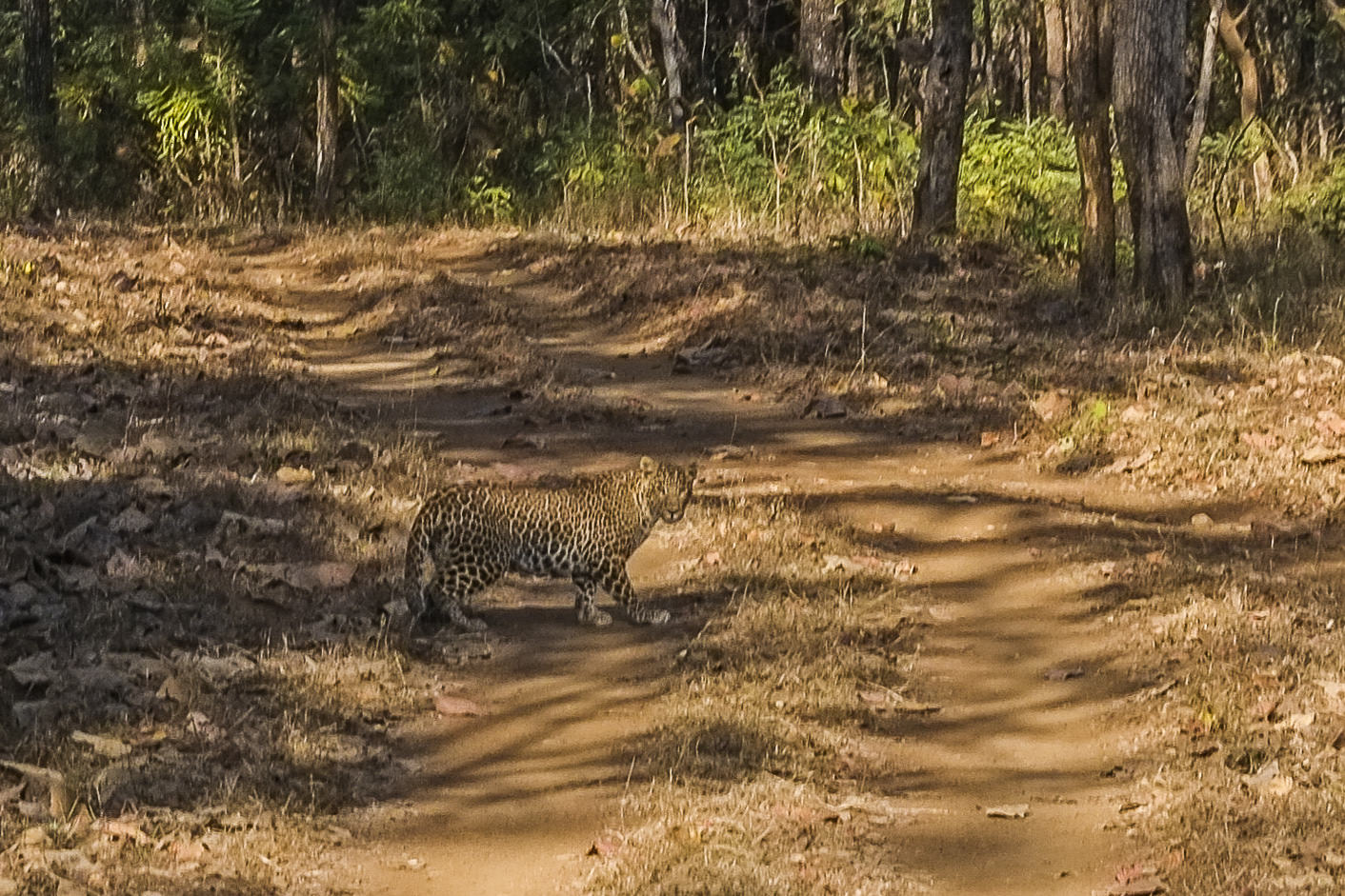
We’d turned a corner and suddenly, as if with no care in the world, a leopard sauntered past and walked ahead of us. Smaller than I expected, the leopard was lithe and quiet, making no sound as she walked past and away from us. These animals are truly the ghosts of the jungle. She was probably after something, because she paused for a few seconds, as if only to give us a perfect view of her behind, and then darted into the bush on the right, lost to us. The jeep broke into excited chatter as the four of us compared notes on the glory we’d just witnessed. I was too enamoured and a little shocked to take pictures, but Hoshner, ever ready, managed a few on the camera.

I never did get to see a sloth bear that morning, but it didn’t matter. Apart from the beautiful sleek leopard, Beejoy introduced us to a variety of birds and trees, bringing the whole place alive. His enthusiasm, matched only by the forest guide, was infectious, and we thoroughly enjoyed the jeep safari. The previous evening we’d been on a canoe safari, which is a must do when in Satpura, and had experienced the forest from the serene Denwa River. Spread over 524 square kilometres (1427 if you include the contiguous Pachmarhi and Bori sanctuaries), Satpura forest is hemmed in on one side by the river, protecting the park from the vagaries of modern life. In relative terms the park is under-visited, as compared to the others in Central India, and the number of visitors a day is tightly controlled by the park authorities, many of whom are from the nearby villages and know the area well. With only 12 jeeps allowed per visit, it’s a different viewing experience, one we completely immersed ourselves into. There are only 45 Tigers in the park and sightings are rare, allowing you to get a glimpse of some of the other animals that inhabit the same space, including Sambar, Deer, Leopards, Sloth Bear and Wild Dogs.
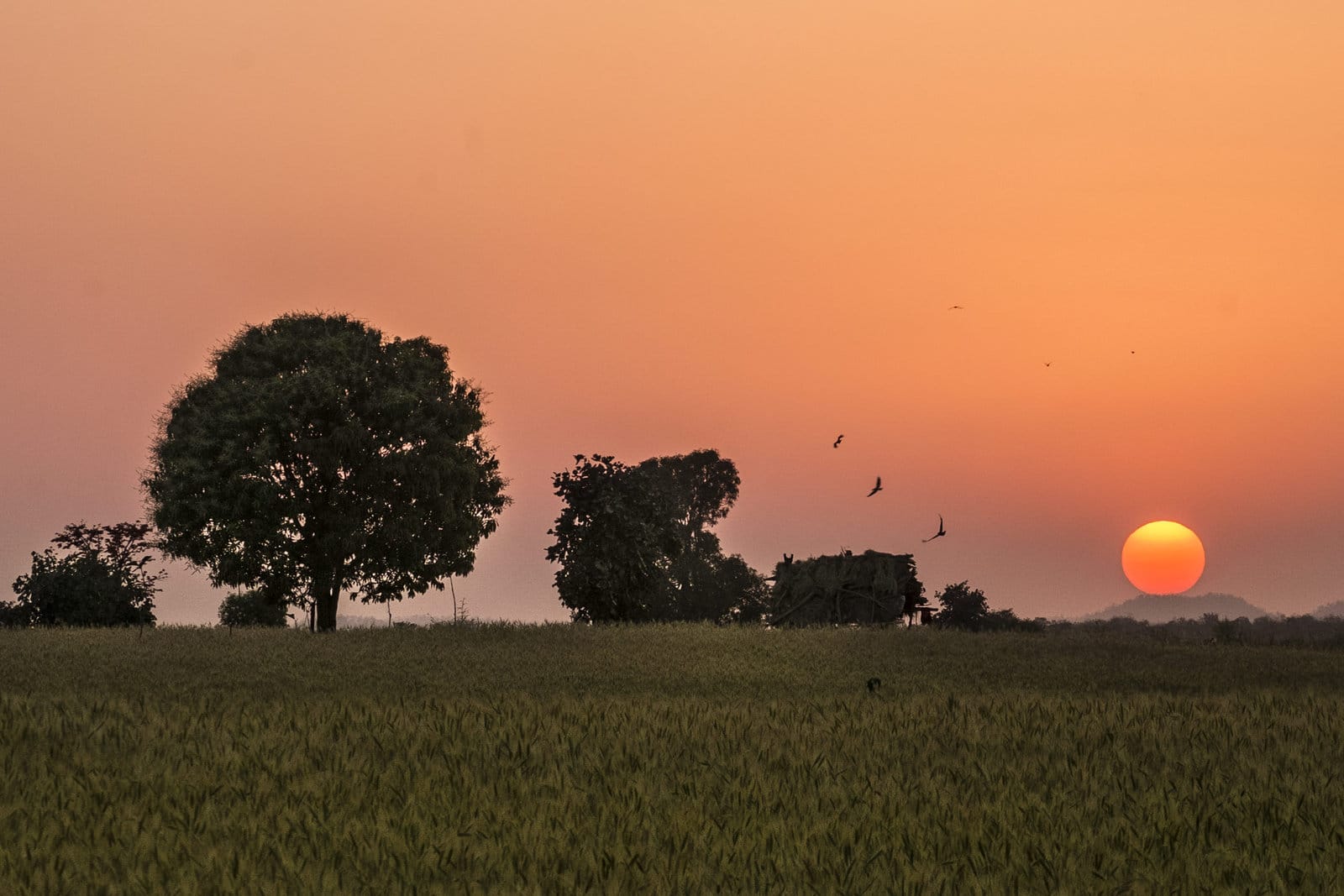
Forsyth Lodge, where we were guests, is spread over 44 acres of forested land adjoining the Satpura buffer zone. The folks at Forsyth have made an effort to keep the property as close to nature as possible and less that 5% of the land is built up with cottages, leaving the rest open and untouched. There’s even a watering hole on the property and it is not uncommon to have the occasional wild boar, sloth bear and even leopard saunter in. ‘Our night traps have picked up movement and even caught some of the animals on camera. In fact, the Mahua tree outside your room will soon become a favourite spot for the bear, deer and wild boar’, says Deepankar the Manager, as we chatted with him during down time between safaris. He was amused at my excitement at wanting to see the animals at night.
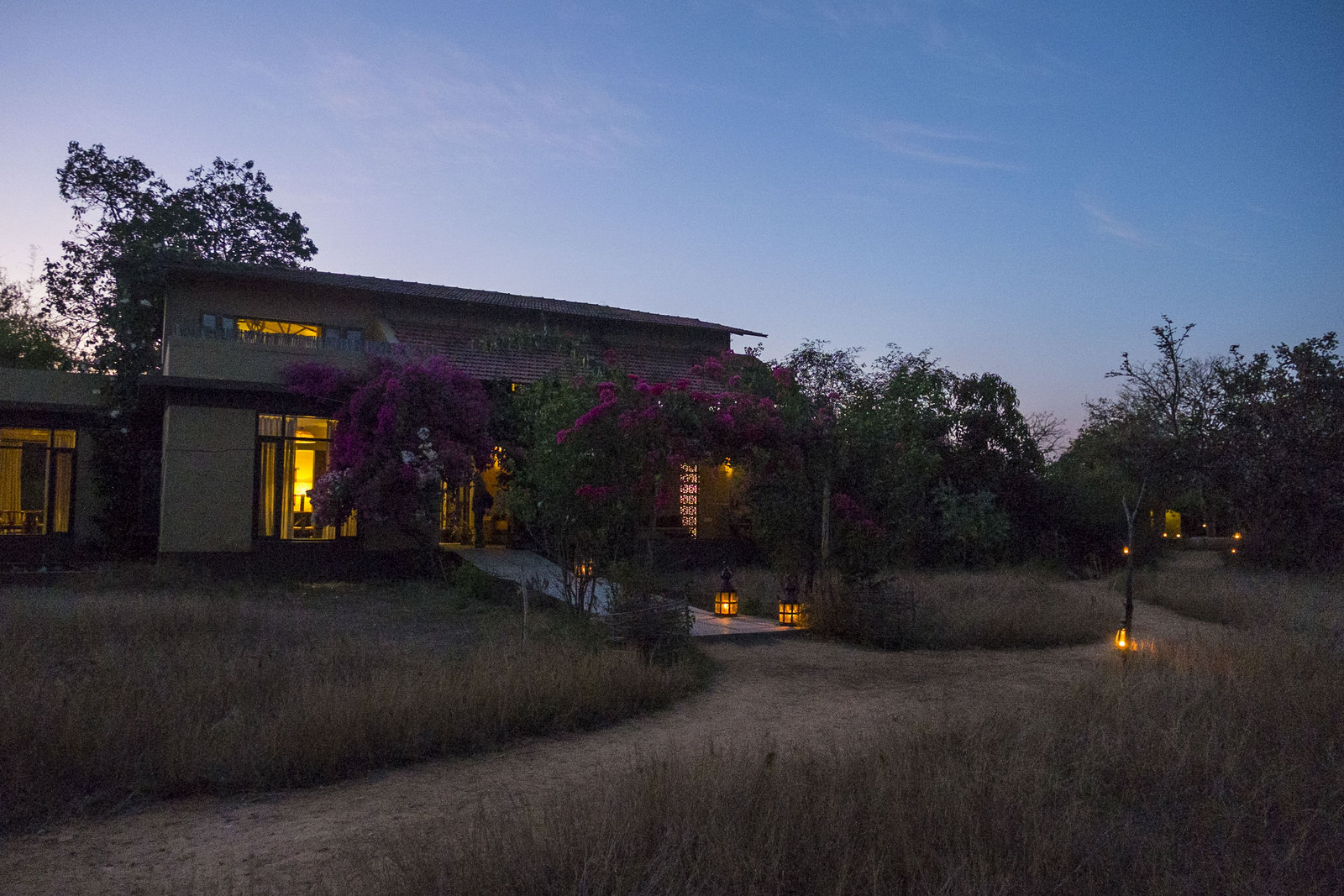
The Mahua tree is an integral part of the region and every year there is an on-going tussle between man and beast for the sweet summer flower. Deepankar is probably one of the nicest people we met, and made us feel right at home. He is full of stories and is working tirelessly with his fabulous team on not only improving the whole jungle experience at Satpura but involving the local community into the experience. He has realised the power of involving them in the conservation process and harnessing their knowledge of the region, passed down through generations and is attempting to ensure that it is preserved and passed on to guests in the best possible manner. Forsyth, like many other high-end eco-friendly jungle lodges offers a great safari experience, but it is the team here that elevates the experience taking their cues from the forest around them.
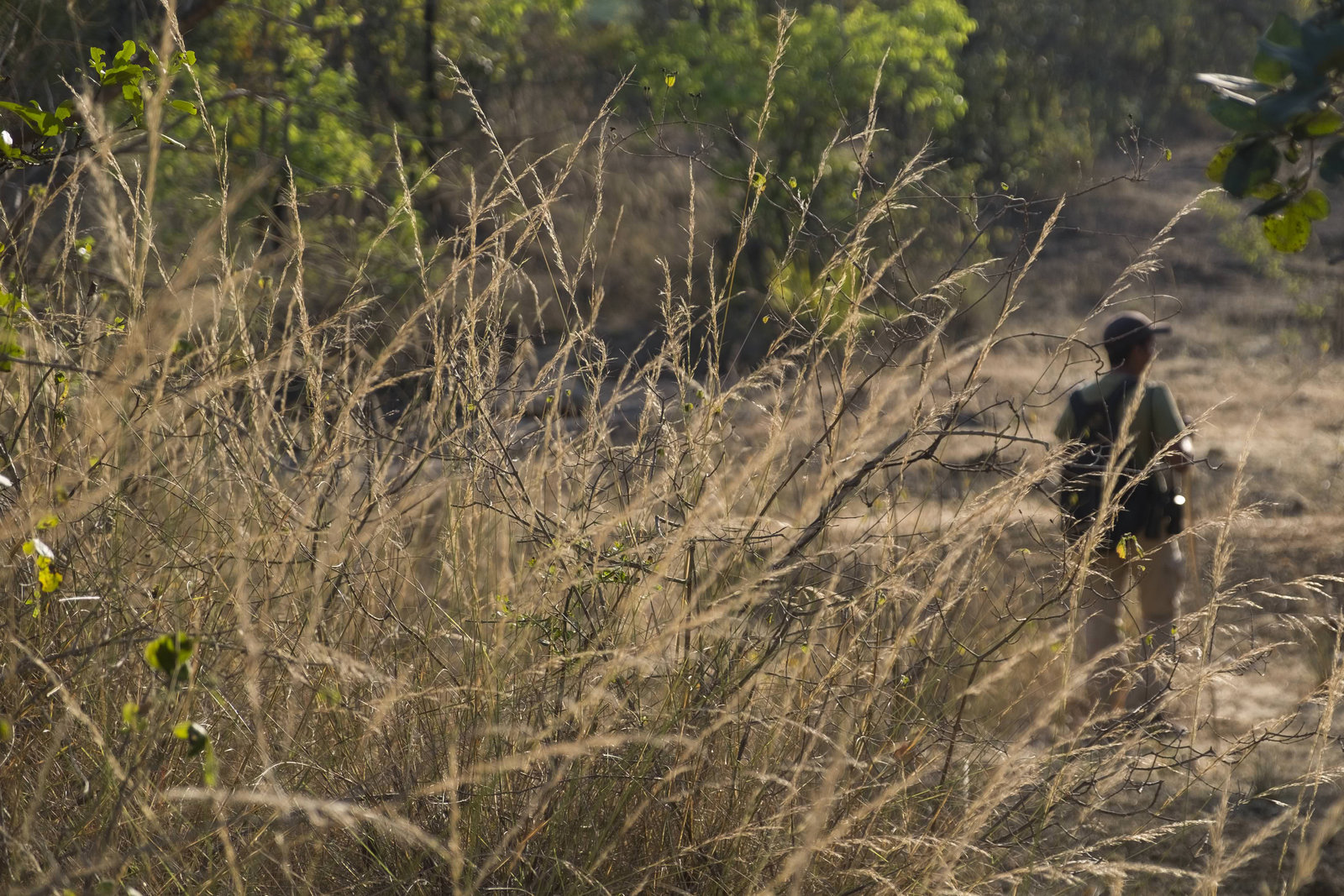
**********
Suddenly we heard a commotion near the entrance to the main lodge building, which is covered in bright pink flowers intermingled with creepers. Beejoy and I rushed there to find Hoshner sprawled on the dusty ground, trying to capture a fan throated lizard as he did some sort of funky mating dance with a female lizard. A couple of other guests were gathered around at a distance, and for several minutes we all watched, unashamedly intruding into the ritual of these creatures whose colour so closely resembled the bush around. I never imagine getting quite so excited about a lizard; but standing there that morning, armed with the right sort of knowledge about these reptiles, I marvelled at the dark brown scales on the lizard and his unique ability to expand the throat when attracting a mate, giving it its name. The passion and enthusiasm of the naturalists at Forsyth Lodge and the forest guides, was evident as they tried to ensure that we experienced the forest at all levels, from the little lizard to the big animals.
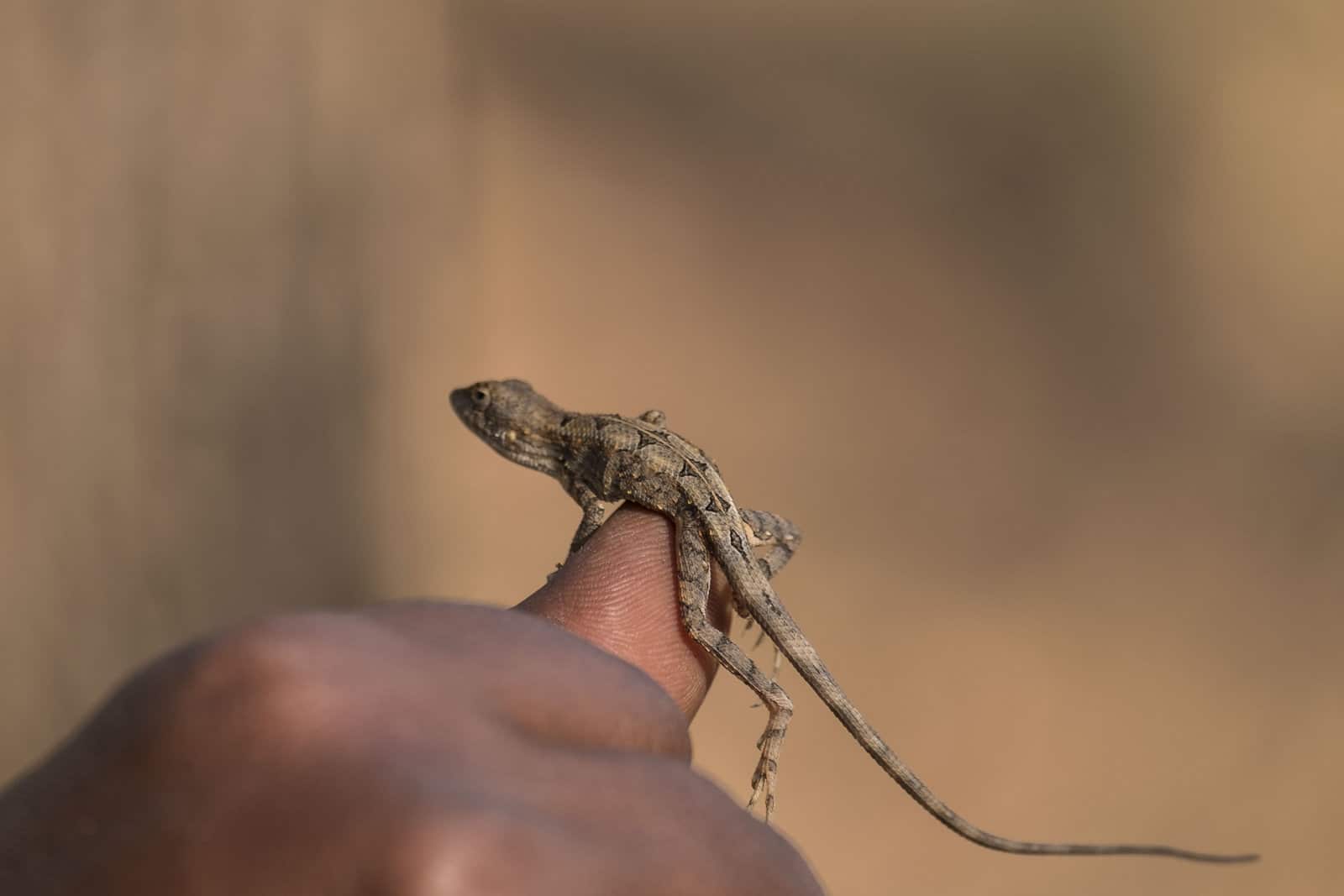
For example, on the canoe safari, which is best undertaken in the evening to witness the setting sun from the river, you see the whole new side of the jungle. The quiet canoe, pulled along deftly by a guide, brought us close to the banks, where birds filled our vision. Satpura is located in a natural migratory path between the Eastern Himalayas and Western Ghats and the many streams are home to migrant waterfowl, which you can get incredibly close to from the canoe. There is the Bar Headed Geese that migrates from Central Asia and the Pochard with its brilliant red crest amongst the wealth of birds to gaze at and photograph. My favourite was the funny looking Black-winged Stilt with enviously long legs, which we learnt serve them well in the marshy areas. Whilst the Denwa is cool and beautiful, we suggest you avoid dipping your hands in the river (as tempting as it might be!), the river is home to the significant crocodile population of Satpura and we saw a couple fairly up close!
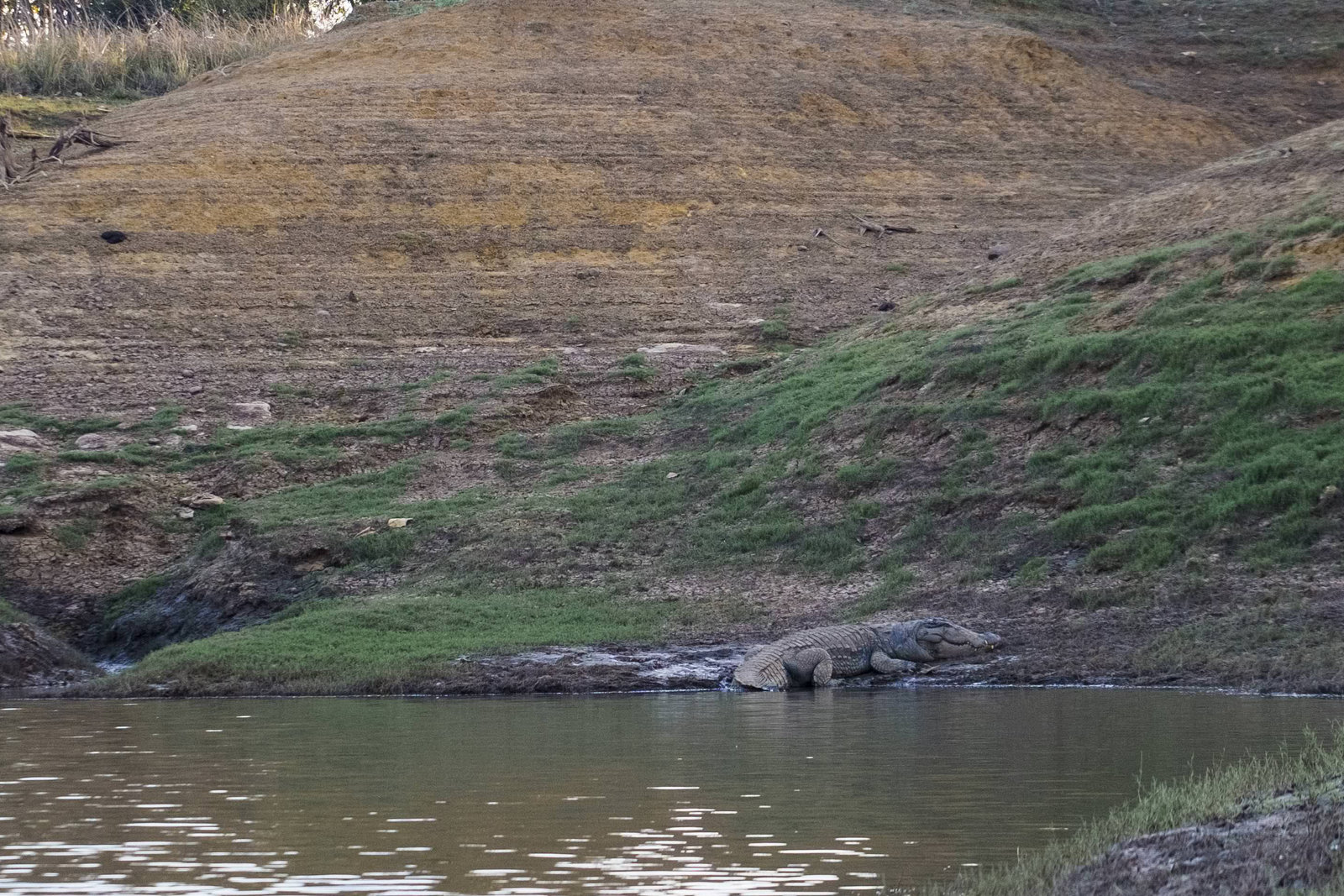
But what brought us closest to the jungle, an experience I will never forget, was the walking safari we had done the previous day, offered only in a handful of parks around the country. It is while walking in the jungle, peering under rocks looking for smaller insects and other creatures, tracking animals on foot, learning about the different trees and uses of their bark, that you truly absorb and understand the magnificence of the jungle. I had never been walking in the jungle before, it was not even something I thought possible. But in Satpura, this beautiful strange park with undulating hills and striking terrain filled with sandstone peaks and jagged deep ravines, one section is marked for walking safaris, with a naturalist and a guide.
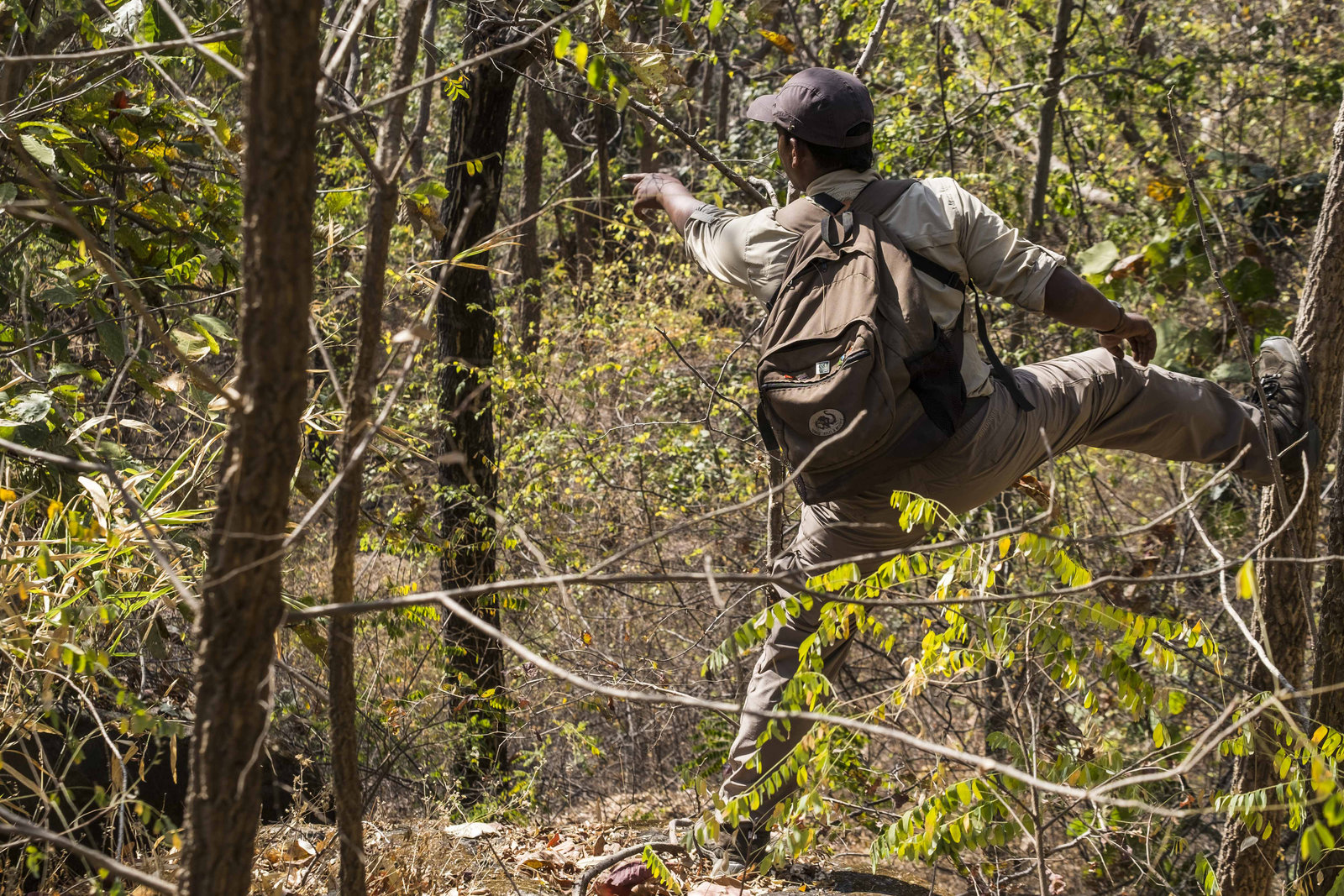
Vineeth, our naturalist, opened up the jungle to us, slowly in layers, pointing out the life within, which one usually misses when on a jeep. We learnt how to measure the height of an elephant from the foot marks, poked and prodded at different poo, and lifted rocks and peered under bush to see what might be hidden underneath. We even tracked a couple of wild dogs for an hour or so, another highlight of our Satpura experience. The experience opened up our minds, enhanced by our fellow guests, two elderly Brits, who’d been on countless safaris in India and still seemed in wonder and awe of everything they saw.
***************
I left Hoshner, Beejoy and the lizard and went to pack, remembering the last few days. Our time in Forsyth and Satpura had unfortunately come to an end, and we had to move on to the next destination. We had eagerly gone on all the safaris that the park had to offer, including the night drive in the buffer zone where we saw our first sloth bear, and we were leaving with memories of a picturesque jungle, beautiful birds, some excellent sightings, great food and people who are truly invested in the region. Forsyth’s chef, a Nepali who has taken to jungle life, has taught himself and his amazing staff the best of Indian food from across the country, and on request whipped up some of the best mutton stew and appams I have eaten outside of Kerala. We bid adieu to our new favourite jungle, with promises to return, a promise I think we will keep.
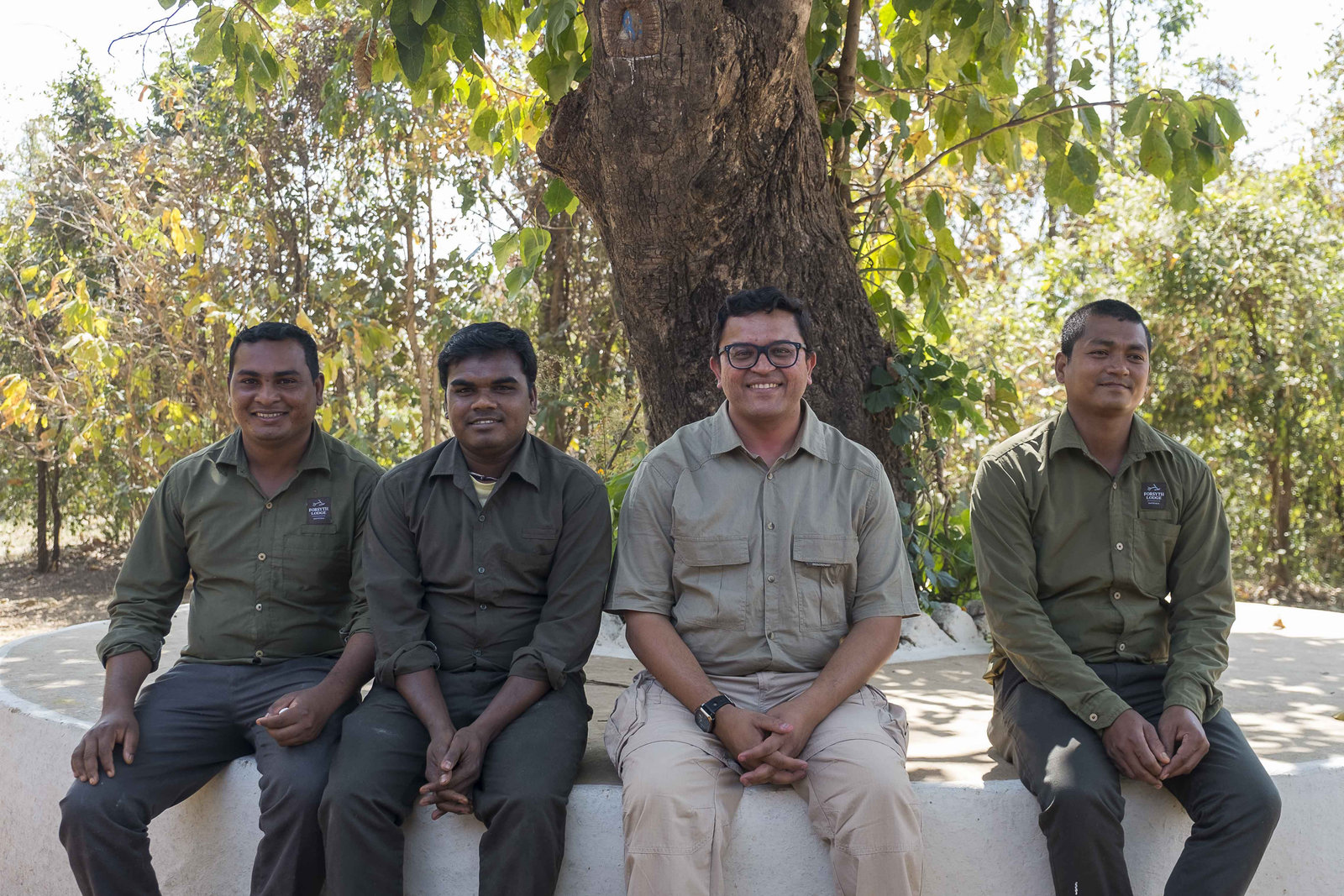
Some Useful Information:
How to get there: Satpura is about a 135 km from Bhopal and you can either do the 3 hour drive down or take a train from Bhopal. The closest rail heads are Pipariya, Sohagpur and Itarsi.
Where to Stay: Satpura boasts of a few excellent Jungle resorts but our pick is Forsyth Lodge where we spent three wonderful days. The property is earthy and beautiful, with a focus on sustainable development and engaging the local community. The food is to die for and the team of naturalists are passionate and knowledgeable.
Dont Miss: While at Satpura make sure you get the complete experience! It’s one of the only parks in India that offers a walking safari in addition to a canoe safari and a night drive in the buffer zone. Of course you also have the regular jeep and elephant safaris.
